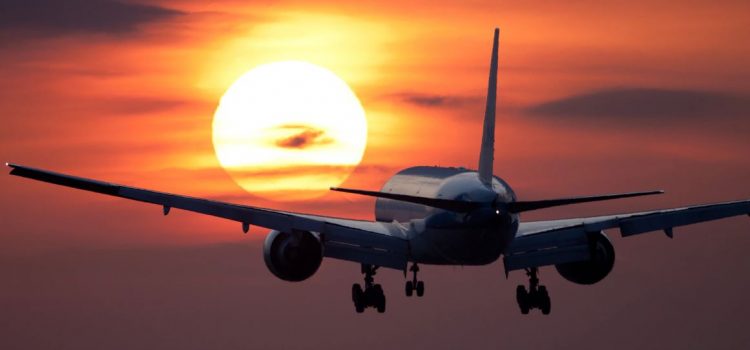
This is a free excerpt from one of Shortform’s Articles. We give you all the important information you need to know about current events and more.
Don't miss out on the whole story. Sign up for a free trial here .
What led to the Boeing Max 9’s emergency landing? What efforts are underway to prevent any recurrence? What does the incident mean for Boeing’s future?
Investigations continue after an Alaska Airlines Boeing 737 Max 9 was forced to make an emergency landing when part of the aircraft’s fuselage blew off. This latest safety issue could cause further reputational damage to Boeing, already burdened by past financial settlements and a drop in stock prices.
Continue reading to learn about the past of Boeing’s safety issues, and their next steps.
What Happened to Boeing?
On January 5, an Alaska Airlines Boeing 737 Max 9 experienced a terrifying mid-flight emergency after part of the plane’s fuselage blew off. The incident calls into question Boeing’s safety practices, a company already grappling with a troubled history.
Background
On January 5, a door plug blew off of Alaska Airlines’ Boeing 737 Max 9 just minutes after takeoff. The explosion caused a rapid decompression that damaged the cabin and left several of the aircraft’s 178 passengers with minor injuries. The plane, headed for Ontario, California, made an emergency landing at Portland International Airport roughly 20 minutes after takeoff.
The new Boeing 737 Max 9 had gone into service just two months earlier. Between December 7 and January 4, Alaska Airlines pilots reported a pressurization alert on the plane three times. However, following maintenance checks, the plane was returned to service.
Experts believe the cause of the blowout was either loose or missing bolts that hold the door plug fuselage panel in place.
Immediate Responses
In the wake of the incident, the FAA and Alaska Airlines responded with measures directed at securing the integrity of the remaining fleet and compensating passengers:
- The Federal Aviation Administration (FAA) grounded 170 Boeing 737 Max 9 planes.
- Alaska Airlines provided all passengers on the flight a full refund and cash payment of $1,500.
Boeing’s Troubled Past
Boeing 737 models have long suffered quality problems―the most serious of which led to catastrophic overseas crashes in 2018 and 2019, killing 346 people. Investigators linked both crashes to a faulty automated flight control system on the 737 Max 8 model, an earlier version of the aircraft. The two crashes led to a 20-month worldwide grounding of the aircraft, during which Boeing repaired the flight control system, changed its operating manuals, and increased pilot training.
Experts say that Boeing, once a respected American company known for its engineering-centric culture and “safety-first” production approach, lost that focus after its acquisition by McDonnell Douglas in 1997—when it shifted from prioritizing product quality to driving profit.
After the crashes, Boeing instituted leadership changes, created a new chief safety officer role, and changed engineering organizational reporting structures. The company says it gained critical insights into safety, engineering, and production through the process.
But Boeing’s product quality remains a concern. Former personnel say that drastic cuts to quality control engineers and inspectors in factories may have led to an overwhelming workload for the remaining staff. Boeing, in response, says it has increased the number of quality inspectors by 20% since 2019.
The company also faces financial difficulties. Backlash from ongoing safety issues led to massive layoffs, lawsuits, and billions of dollars in penalties for the company. Since January 5, 2024, Boeing shares have fallen 18%.
Investigation Underway
Following the Alaska Airlines incident, The National Transportation Security Board (NTSB), Federal Aviation AAA, and Boeing embarked on extensive investigations to pinpoint the exact causes of the alarming mishap and work toward stronger safety measures in all subsequent flights.
- The NTSB launched a safety investigation to review all aspects of the door plug’s manufacture, production, and quality assurance.
- The FAA initiated an audit of Boeing’s production and quality control processes. It’s also reviewing data from its inspection of 40 grounded Max 9 jets and widening its investigation to include production lines at Spirit Aerosystems, a third-party aircraft parts supplier that installs Boeing’s door plugs.
- Boeing is also:
- Conducting additional inspections at its factory and of Spirit.
- Inviting airlines operating the Max 9 to conduct more inspections at the manufacturing stage.
- Having a third party review its quality management system.

Want to fast-track your learning? With Shortform, you’ll gain insights you won't find anywhere else .
Here's what you’ll get when you sign up for Shortform :
- Complicated ideas explained in simple and concise ways
- Smart analysis that connects what you’re reading to other key concepts
- Writing with zero fluff because we know how important your time is






